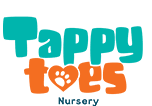
How to Encourage Diversity and Inclusion in Nursery
Are you looking to encourage diversity and inclusion in nursery settings? As a parent or educator, you can create a space that celebrates diversity and promotes inclusivity, helping young children develop valuable social and emotional skills that will benefit them throughout their lives. In this blog, we will explore the importance of diversity and inclusion in early childhood education, discuss the benefits of a multicultural approach, and provide practical strategies for encouraging diversity. By implementing these strategies, you will help create a safe and nurturing environment where every child feels seen, heard, and valued, setting the stage for a lifetime of success.
What is Inclusion in Early Childhood Education?
Inclusion in early childhood education means creating an environment that welcomes and supports all children, regardless of their cultural, linguistic, or abilities. Inclusive education is not just about accepting differences but embracing and celebrating them.
An inclusive nursery setting recognises that every child has unique strengths, needs, and learning styles. It provides a safe space where children can explore their identities, express themselves, and develop a sense of belonging.
What is Cultural Diversity?
Cultural diversity includes recognising and celebrating various traditions, languages, and practices. It’s essential to help children understand and accept differences, nurturing curiosity rather than stereotypes. This encourages them to respect others and engage with the world around them without bias.
The Importance of Diversity and Inclusion in Early Years
Diversity and inclusion meaning extends beyond just visual differences. They are critical components of a healthy and thriving early childhood education environment. When children are exposed to diverse cultures, beliefs, and practices, they develop empathy, tolerance, and respect for others. Inclusive education helps children feel valued and supported, enhancing their self-esteem, confidence, and overall well-being.
Moreover, a diverse and inclusive environment prepares children for the real world, where they will encounter people from different backgrounds and cultures. We can help the next generation become responsible and active global citizens by fostering an appreciation for diversity.
Benefits of Multicultural Education
Multicultural education has numerous benefits for children, including:
- Cultural Competence: Children develop an understanding and appreciation of different cultures, traditions, and practices.
- Language Development: Exposure to multiple languages enhances language development and cognitive skills.
- Increased Empathy: Children learn to respect and appreciate differences, developing empathy and compassion for others.
- Broader Perspectives: Multicultural education exposes children to diverse perspectives, helping them develop a more nuanced understanding of the world.
- Preparation for a Global Society: Children become better equipped to navigate a diverse and interconnected world.
How to Increase Diversity and Inclusion in the Nursery?
 Celebrate Diversity
Celebrate Diversity
Celebrate the unique backgrounds and experiences of the children in your nursery. Encourage them to share their traditions, customs, and cultural practices. This can help create a sense of community and belonging and teach children the value of diversity and inclusivity. For example, you could create a “culture corner” in the classroom where children can share their favourite traditions and customs from home or have a “taste test” where children can try foods from different cultures.
Use Inclusive Language
When interacting with children, it’s important to use inclusive and respectful language of all gender identities. Avoid using stereotypes or biases that can unintentionally marginalise certain groups. For example, instead of asking, “What’s your favourite boy or girl toy?” ask, “What’s your favourite toy?” This helps to avoid reinforcing gender stereotypes and lets children choose toys based on their interests, not their gender.
Provide Diverse Resources
Stock your nursery with books, toys, and materials that reflect diverse cultures, abilities, and genders. Use these resources to teach children about different traditions, customs, and beliefs. For example, you could read a book about a family’s celebration of Diwali, the Hindu festival of lights, and discuss how people celebrate this holiday. You could also provide puzzles and building toys with different shapes and colours to encourage creativity and problem-solving.
Create a Healthy Environment
A positive environment in a nursery is key to encouraging children to explore diversity. Create a positive and welcoming environment where children feel safe and valued. Encourage open communication, active listening, and respect for others’ opinions and beliefs. This involves incorporating multiculturalism into daily activities, implementing anti-bullying strategies that address the root cause of bullying behaviour, and managing all stereotypes.
Encouraging Open Discussions
Discussions about cultural differences and common beliefs can create a welcoming atmosphere. Teachers can facilitate these discussions by asking open-ended questions, sharing experiences, and being sensitive to each child’s needs. For example, during a classroom session on diversity, a teacher could initiate an open discussion by asking questions like, “What are some traditions or customs important to your family?” This encourages children to share their experiences and perspectives, fostering mutual understanding and appreciation for cultural diversity.
Address Bullying and Discrimination
Many types of bullying, such as social and physical, target specific backgrounds. Have a clear policy on bullying and discrimination, and address incidents promptly and appropriately. Teach children the impact of their words and actions on others, and encourage empathy and kindness.
Involve Families
Engage families in diversity and inclusion efforts by hosting cultural events, workshops, and activities celebrating diverse backgrounds’ richness. Create opportunities for parents to share their stories and experiences, such as a ‘family of the month’ programme, where they can showcase their cultural heritage through music, dance, food, and art. This helps to build a sense of belonging and fosters a more inclusive environment for all children, where they can learn from and appreciate each other’s differences.
Train Your Staff
Provide staff with ongoing training and professional development on diversity and multicultural education. Ensure that all staff members understand the importance of these values and can implement them effectively. Training for early childhood education teachers should include modules on dealing with different cultures, understanding diversity and inclusion, and developing strategies to foster an inclusive environment.
Promoting Respect for Beliefs
Nurseries must actively promote respect for various beliefs and practices. This can be achieved by incorporating lessons on diversity and inclusivity into the curriculum, hosting cultural events and activities celebrating different traditions, and encouraging open dialogue and discussion about beliefs and practices. Teachers can also model respectful behaviour by acknowledging and celebrating diverse holidays and traditions.
Inclusion and Diversity at Tappy Toes Nursery
Tappy Toes Nursery knows how to encourage diversity and inclusion in nursery settings. Our mission is to provide a safe, welcoming, and stimulating environment where children can grow and develop through play-based learning. Our nursery’s teachers and staff are committed to creating a positive and inclusive environment that celebrates each child’s unique strengths, needs, and interests.
At Tappy Toes Nursery, we recognise that every child learns and develops at their own pace, and we strive to provide a personalised approach to early childhood education. Our nursery’s curriculum fosters curiosity, creativity, and critical thinking skills while promoting emotional intelligence, social skills, and physical development.
Conclusion
Diversity and inclusion are not mere buzzwords; they form the core of a nurturing and accepting community. By embracing these values, we can give our children the tools they need to grow into compassionate, thoughtful adults. At Tappy Toes Nursery, we believe in the power of diversity and inclusion in early childhood education. Our commitment to creating a positive and welcoming environment for all children, regardless of their backgrounds or abilities, is a testament to the importance of valuing and celebrating diversity. Recognising and embracing each child’s unique strengths and needs, we help shape the next generation of global citizens better equipped to navigate a diverse and interconnected world. Today’s effort will pave the way for a more harmonious future, free from bias and filled with understanding.

